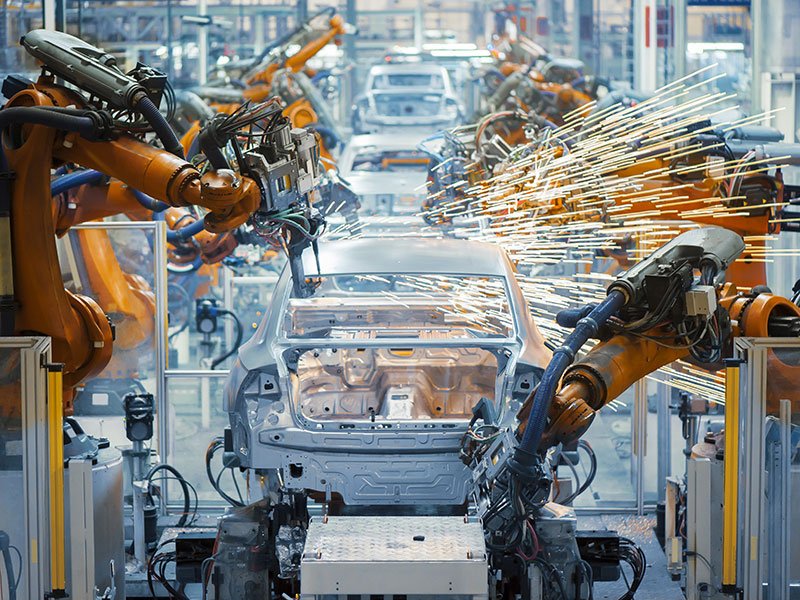The Prime Minister’s speech, A Future Made in Australia, has made a splash. Jennifer Hewett in the Australian Financial Review starts her column by commenting on the catchiness of the slogan, but the headline suggests she questions the economics.
Hewett hopefully is aware that the slogan isn’t new – it was the title of an ALP policy document for the 2022 election. However, the litany of things under the heading seems to have morphed somewhat.
Judith Sloan in The Australian is more direct, claiming that it is a case of going back to the future and that it tries to restore “deeply discredited industry policy.” The centrepiece of the PM’s reasoning is that:
“We have to think differently about what government can – and must – do to work alongside the private sector to grow the economy.
“To boost productivity, improve competition and secure our future prosperity.
“Combining market tools, with government action – to create wealth and create opportunity.
To say that this is sloppy speechwriting is an understatement. Short sentences are good in speeches, but the third attempt here isn’t a sentence (one of twenty-five phrases that start with a capital letter and end with a full stop that aren’t complete sentences). By all means, list things, but write them as a list. I also don’t know how the PM read that last phrase with its pointless comma after “tools”.
However, the real question is whether it is sloppy economics or, more correctly, whether it is a policy based on poor economics.

In the 1980s, Harvard’s Michael E. Porter became famous with two books, Competitive Strategy and Competitive Advantage. In these books, he introduced his five forces model for analysing competitive dynamics in an industry.
It was used to great effect by Telstra to segment its corporate customers with the advent of competition, where Telstra managed businesses that were in communications differently from those that were large and could be the basis for competition.
In 1990, Porter took his theory a step further, writing a Harvard Business Review article and then a book titled The Competitive Advantage of Nations. The article starts:
“National prosperity is created, not inherited. It does not grow out of a country’s natural endowments, its labour pool, its interest rates, or its currency’s value, as classical economics insists.
Porter created a new model called the Diamond of National Advantage that had four determinants that interacted with each other:
- Firm strategy, structure and rivalry
- Factor conditions
- Demand conditions
- Related and supporting industries
The Hawke government embraced this model. It is often forgotten that the expectation of telecommunications reform was the creation of an Australian ICT industry.
The policy was grounded in the first of Porter’s determinants – the principle idea that firms cannot compete globally unless they cut their teeth on strong rivalry in their home market.
That policy was partly compromised by the merger of OTC and Telecom Australia to create a strong “national champion”.
The expected influx of successful international telcos never happened, and Telstra became so inward-looking that it failed to develop any significant business outside Australia.
However, one failed attempt to use the model does not invalidate it. When the Prime Minister says, “If we don’t act to shape the future, the future will shape us”, he is speaking a self-evident truth. However, the question remains: How can the government act to shape the future?
The answer to that has to be strategic management, a mindset that involves an ongoing commitment to best position the country to take advantage of opportunities as they are presented.
One such opportunity is to work with our partners in the Quad on supply chains for critical minerals (more correctly, metals). Our dependence on a small number of markets for a small basket of goods is a key weakness of the economy. The first test is responding to the Chinese action on nickel in Indonesia.
The scope of the Albanese government’s ambition seems limited to bundling a set of initiatives into one Act of parliament.
Much as the shadow treasurer Angus Taylor might like to puff his chest out and claim that the only way to build productivity is to get government out of the way, Coalition policy has been just as much a bundle of disconnected initiatives. The Coalition signed off on including critical minerals in the Quad and wanted to spend billions in Northern Australia.
Unfortunately, there is no mechanism to refresh initiatives under Labor’s plan. The first-ever Statement of Expectations from the government for the Productivity Commission (PC) contains some of the right words.
Still, it may not be enough to move the focus beyond the “classical economics” that Porter criticised.
Creating the PC itself was always a mistake (which is no surprise since it was a Howard and Costello decision).
It created a monopoly on productivity thinking within the government and closed down a source of cross-sectoral thinking (the Economic Planning Advisory Commission.) Equally, a mistake was abolishing the Commission for the Future.
Innovation has underpinned Australia’s success in agriculture and mining. Much of that innovation originates in the CSIRO, Australia’s most successful industry policy that will celebrate its centenary in just two years.
In short, the strategy for A Future Made in Australia seems to have been cobbled together with the same skill and attentiveness applied to the grammar in the PM’s speech.
Labor can and must do better than this.
Do you know more? Contact James Riley via Email.
